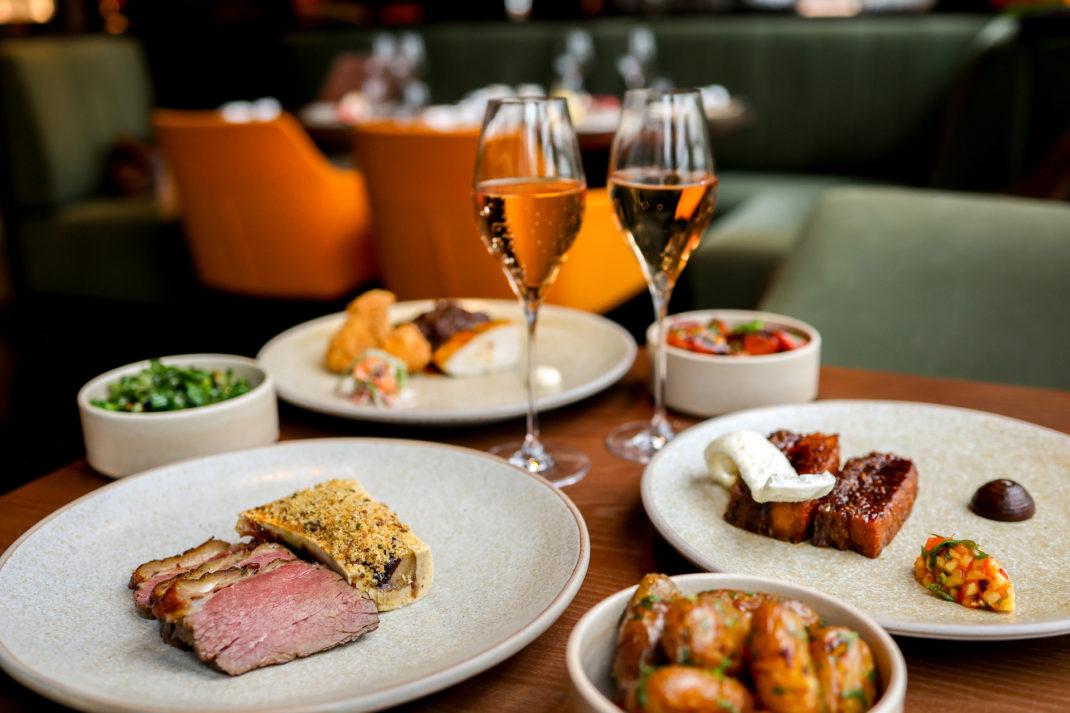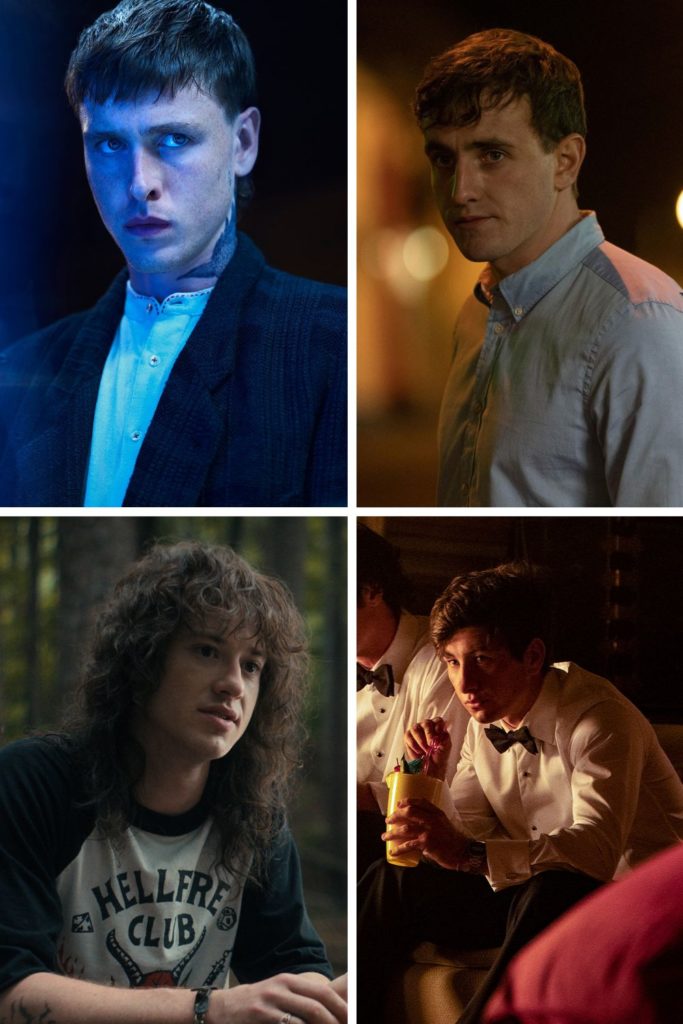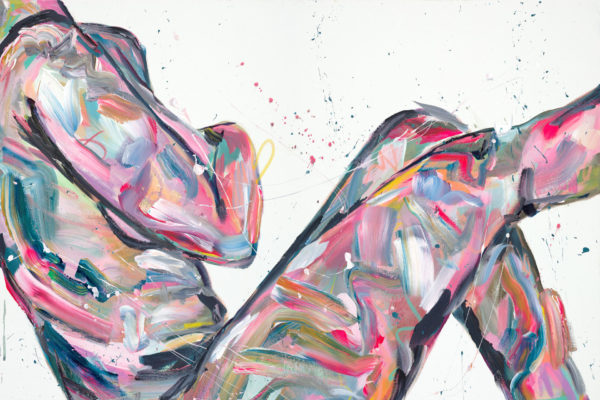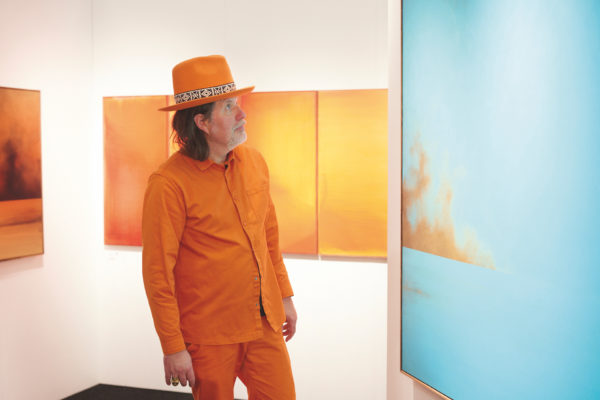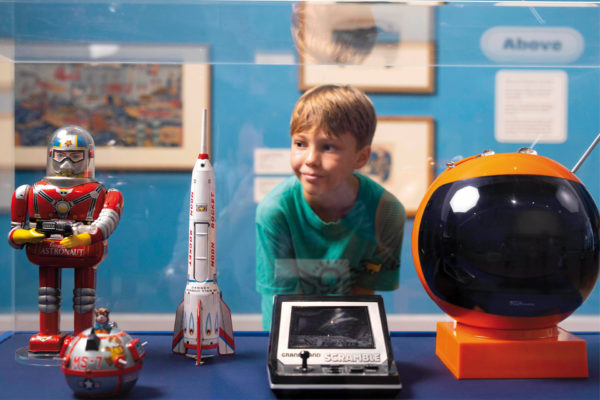In the Studio with Artist Kojo Marfo
By
1 year ago
Getting to know the Ghanaian artist in his small South London studio

Caiti Grove meets Kojo Marfo: a school truant turned Afro expressionist with big ambitions.
Interview with Kojo Marfo
Kojo Marfo’s studio is literally crammed with creativity. In the small South London room overlooking residential gardens, he has stapled a huge canvas to the wall. Two people stand, one holds a cockerel, the other a baby with a mask-like face. They are enormous, dramatic, a twist on the traditional African art that Kojo grew up with. ‘It’s a conversation about pushy parents. But it’s more to do with the pressure and expectations they put on us – we cannot cope,’ he explains. His bike leans against the wall and tubes of paint pile up on the floor. The working space might be small – ‘a big studio would feel like a false elevation’ – but Kojo’s ambitions are large, with exhibitions in Mayfair and New York in recent years, and more to come.
Kojo was eight when he started skipping school in his native Ghana. Instead, he would drop into the nearby library and read Asterix comics and art books on Picasso. ‘At ten o’clock in the morning I would tell them, “I’ve been sent home, my Mum will pick me up in the evening”.’ Or he would head to the zoo where children got in for free. After a few strict letters sent in his school bag, he learnt to read them first and censor any to reveal his ruse. ‘It wasn’t like over here where you are coddled, school was tough. Primary school was hardest,’ he tells me of his education in Ghana. ‘I used to forget my socks were dirty. So my Mum would rush around, wash them and dry them by hanging them on the back of the fridge,’ before the rigorous uniform inspection in school assembly.
At home, his grandmother brought up her grandchildren while his mother and aunts worked, and he still refers to his grandmother as ‘Mum’, and his mother as ‘Auntie’. ‘I have a typical African family, we lived in a compound house where my Grandma was the head of the family. We inherit our bloodline from our mother.’
Ghana’s violent coup d’état of 1988 overthrew President Hilla Limann’s government, and Kojo recalls hiding under the bed with his brother. Their house overlooked the broadcasting building where soldiers assembled to control the media narrative of recent skirmishes. ‘They would fire at each other, it was scary. To escape back to their home towns, people had to pass through barriers as they travelled from Accra. It was one of those things that felt normal but when you look back you think, “How did we manage to survive?”’
At 18, Kojo moved to New York for art school, but the city proved to offer too many distractions. ‘It was the Nineties, everyone was in a band. We all wore baggy trousers,’ he says, smiling. ‘I was trying to get my head round the street art movement – I hung around just to observe them. But my Auntie [Kojo’s mother] got scared, she would say on the phone, “These guys are known for putting paint on trains. You’ll get arrested!”’ Kojo changed course and came to London. ‘The houses looked all the same. I thought, “How do people remember where they live?”’
While working in a succession of retail jobs, Kojo painted with dedication and ferocity. In 2010 an LA gallerist declared that he would make Kojo famous – that was his first breakthrough. He broke with them not long afterwards but the rest, as they say, is history. Kojo now rules his own world. He calls the tune and creates for a massive audience. Not bad for a school truant. He has shown them all what he can do.


